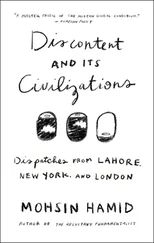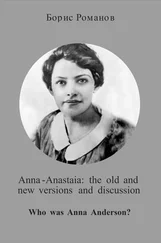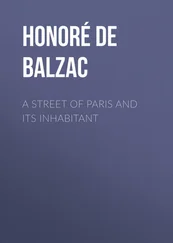Henry Edwards - Old and New Paris - Its History, Its People, and Its Places, v. 1
Здесь есть возможность читать онлайн «Henry Edwards - Old and New Paris - Its History, Its People, and Its Places, v. 1» — ознакомительный отрывок электронной книги совершенно бесплатно, а после прочтения отрывка купить полную версию. В некоторых случаях можно слушать аудио, скачать через торрент в формате fb2 и присутствует краткое содержание. Жанр: foreign_antique, foreign_prose, Путешествия и география, на английском языке. Описание произведения, (предисловие) а так же отзывы посетителей доступны на портале библиотеки ЛибКат.
- Название:Old and New Paris: Its History, Its People, and Its Places, v. 1
- Автор:
- Жанр:
- Год:неизвестен
- ISBN:нет данных
- Рейтинг книги:4 / 5. Голосов: 1
-
Избранное:Добавить в избранное
- Отзывы:
-
Ваша оценка:
- 80
- 1
- 2
- 3
- 4
- 5
Old and New Paris: Its History, Its People, and Its Places, v. 1: краткое содержание, описание и аннотация
Предлагаем к чтению аннотацию, описание, краткое содержание или предисловие (зависит от того, что написал сам автор книги «Old and New Paris: Its History, Its People, and Its Places, v. 1»). Если вы не нашли необходимую информацию о книге — напишите в комментариях, мы постараемся отыскать её.
Old and New Paris: Its History, Its People, and Its Places, v. 1 — читать онлайн ознакомительный отрывок
Ниже представлен текст книги, разбитый по страницам. Система сохранения места последней прочитанной страницы, позволяет с удобством читать онлайн бесплатно книгу «Old and New Paris: Its History, Its People, and Its Places, v. 1», без необходимости каждый раз заново искать на чём Вы остановились. Поставьте закладку, и сможете в любой момент перейти на страницу, на которой закончили чтение.
Интервал:
Закладка:
“There are in this capital,” wrote the author of the “Tableau de Paris” more than a hundred years ago, “between six and seven hundred coffee-houses, the common refuge of idleness and poverty, where the latter is warmed without any expense for fuel, and the former entertained by a view of the crowds who make their entrance and exit by turns. In other countries, where liberty is more than an empty name, a coffee-house is the rendez-vous of politicians who freely canvass the conduct of the Minister, or debate on matters of State. Not so here! I have already given a very good reason why the Parisians are sparing of their political reflections. If they speak at all on State matters it is to extol the power of their sovereign, and the wisdom of his counsellors. A half-starved author, with all his wardrobe and movables on his back, dining at these restaurants on a dish of coffee and a halfpenny roll, talks big of the immense resources of France, and the abundance she offers of every necessary of life; whilst his only supper is the steam arising from the rich man’s kitchen, as he returns to his empty garret.”
The writer goes on to show that the coffee-houses were haunted by cliques of critics, literary and artistic, and his description sometimes reminds one of Button’s, in the days of Addison and Steele. “Those,” he says, “who have just entered the lists of literature stand in dread of this awful tribunal, where a dozen of grim-looking judges, whilst they sip and sip, deal out reputation by wholesale. Woe to the young poet, to the new actor or actress! They are often sentenced here without trial. Catcalls, destined to grate their affrighted ears, are here manufactured over a dish of coffee.”
The writer then proceeds to lament the absence of sociability at the coffee-house, and the gloomy countenances of its frequenters, as contrasted with the convivial faces of those “brave ancestors” of his generation who used to pass their leisure, not at coffee-houses, but at taverns. One cause of the difference he finds in the change of beverage. “Our forefathers,” he explains, “drank that mirth-inspiring liquor with which Burgundy and Champaign supplied them. This gave life to their meetings. Ours are more sober, no doubt, but is this sobriety the companion of health? By no means. For generous wine we have substituted a black beverage, bad in itself, but worse by the manner in which it is made in all the coffee-houses of this fashionable metropolis. The good Parisians, however, are very careless in the matter; they drink off whatever is put before them, and swallow this baneful wash, which in its turn is driven down by more deadly poisons, mistakenly called cordials.”
Since the above was written, coffee, far from dying out, has become more and more popular, and musical cafés, theatrical cafés, and literary cafés have been everywhere established in Paris. There are financial cafés, too, chiefly, of course, in the region of the Bourse; and among the cafés by which the Bourse is partly surrounded used to be one which owed its notoriety to the fact that Fieschi’s mistress – in the character of “dame du comptoir” – was exhibited there to the public.
Two days after the execution of the would-be regicide and actual maker of the famous infernal machine, a crowd of people might have been seen struggling towards the doors of a café on the Place de la Bourse, which was already as full as it could hold. “Those,” says an eye-witness, “who performed the feat of gaining admission, saw, gravely seated at a counter, adorned with costly draperies, an ordinary-looking woman, blind of one eye, and possessing in fact no external merit but that of youth: It was Nina Sassave. There she was, her forehead radiant, her lip quivering with delight, her whole expression that of unmingled pride and pleasure at the eager homage thus offered to her celebrity. A circumstance eminently characteristic of the epoch! Here had a creature, only known to the world as a base and treacherous informer, as the mistress of an assassin, been caught up for a show by a shrewd speculator. And what is more remarkably characteristic still, the public took it all as a perfect matter of course, and amply justified the speculator in his calculations.”
On the same side as the Café Turc, but further on towards the Rue du Temple, stood the tennis ground of the Count d’Artois (afterwards Charles X.), built by the architect Belanger, one of the most intimate and faithful friends of the famous Sophie Arnould.
On the site of the Count d’Artois’ tennis ground was erected, at the beginning of the Second Empire, a theatre, called in the first instance Folies-Meyer, but which, after various changes of title, became at last the Théâtre Déjazet, under the direction of the celebrated actress of that name, already seventy years of age, or nearly so, but still lively and graceful. For this theatre in 1860 Victorien Sardou wrote his first successful piece, “M. Garat,” in which Déjazet herself played the principal part, supported by Dupuis, who was afterwards to become famous in opera-bouffe as the associate of Mademoiselle Schneider.
The line of boulevards here presents an enormous gap, in the centre of which, between two fountains, stands a monument to the glory of the Republic. The rest of the open space serves twice a week as a flower market, the largest in Paris. At the beginning of the century La Place du Château d’Eau, as the open space in question is called, did not exist. The fountain which gave its name to the Place was constructed under the First Napoleon in the year 1811, but this fountain was replaced in 1869 by a finer one inaugurated by Napoleon III. The later fountain was itself, however, to disappear, soon afterwards to be replaced by the aforesaid monument to the Republic. Behind one of the large depots on the north side of the Place du Château d’Eau, looking out upon the Rue de Malte, was constructed in 1866 the Circus of the Prince Imperial, afterwards called the Theatre of the Château d’Eau, where at one time dramas, at another operas, have been given, never with success. Ill-luck seems to hang over the establishment, which, with its 2,400 seats, must be reckoned among the largest theatres in Paris. In Paris, however, as in London, theatres have often the reputation of being unlucky when, to succeed, all they require is a good piece with good actors to play in it.
The Boulevard du Temple had at one time its famous restaurants, like other boulevards in the present day. Here stood the celebrated Cadran Bleu and the equally celebrated Banquet d’Anacréon. The last of the great restaurants on this boulevard was the one kept by Bonvalet, who, during the siege of Paris, was generous enough to supply additional provisions to unfortunate actors and actresses who found themselves reduced to the limited rations distributed by the Municipal Council.
The Rue de Bondi, running out of the Boulevard Saint-Martin, brings us once more to a group of theatres. The Folies Dramatiques stands at number forty. This theatre was started in 1830 by M. Alaux, previously manager of the Dramatic Parnassus on the Boulevard du Temple. It was opened on January 22nd, 1831, under the direction of M. Léopold, who produced at this house a long series of successful pieces. Among these may be mentioned “Robert Macaire” with Frédéric Lemaître in the leading part. When, amidst demolitions and reconstructions, the original Folies Dramatiques came down, the company was transferred to the new building which now stands in the Rue de Bondi. Here were brought out Hervé’s “Œil Crevé” and “Petit Faust,” Lecoq’s “Fille de Madame Angot,” Planquette’s “Cloches de Corneville,” and other works which were soon to become known all over Europe. Vaudevilles are now played at this theatre alternately with operettas. The house contains 1,600 seats. The Ambigu-Comique, built on a sort of promontory which dominates the Boulevard Saint-Martin and the Rue de Bondi, was opened in 1829, in place of the original Ambigu, burnt to the ground two years previously. The new house, which contains 1,600 seats, was inaugurated in presence of the Duchess of Berri, widow of the unhappy nobleman who a few years before was stabbed by Louvois on the steps of the Opera House. In 1837 this theatre was entirely rebuilt under the direction of M. Rochart. Untrue, like so many theatres, to its original name, the Ambigu-Comique was to become associated with nothing in the way of ambiguity, nothing in the way of comedy, but with melodramas, often of a most blood-curdling kind. Here, it is true, was produced the “Auberge des Adrêts,” which, in the hands of Frédéric Lemaître, was to be transformed from a serious drama into a wild piece of buffoonery; so that the author of the work, too nervous to attend the performance himself, was almost driven mad when his trusted servant returned home and reported to him the bursts of laughter with which the work had been received. At the Ambigu were brought out some of the best pieces of Alexandre Dumas the elder, Frédéric Soulié, Adolphe Dennery, and Paul Feval.
Читать дальшеИнтервал:
Закладка:
Похожие книги на «Old and New Paris: Its History, Its People, and Its Places, v. 1»
Представляем Вашему вниманию похожие книги на «Old and New Paris: Its History, Its People, and Its Places, v. 1» списком для выбора. Мы отобрали схожую по названию и смыслу литературу в надежде предоставить читателям больше вариантов отыскать новые, интересные, ещё непрочитанные произведения.
Обсуждение, отзывы о книге «Old and New Paris: Its History, Its People, and Its Places, v. 1» и просто собственные мнения читателей. Оставьте ваши комментарии, напишите, что Вы думаете о произведении, его смысле или главных героях. Укажите что конкретно понравилось, а что нет, и почему Вы так считаете.












